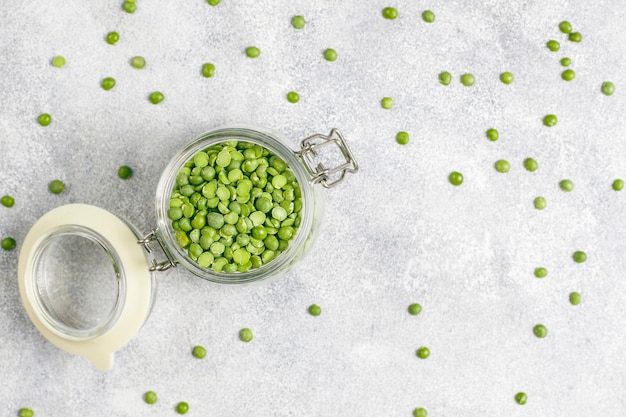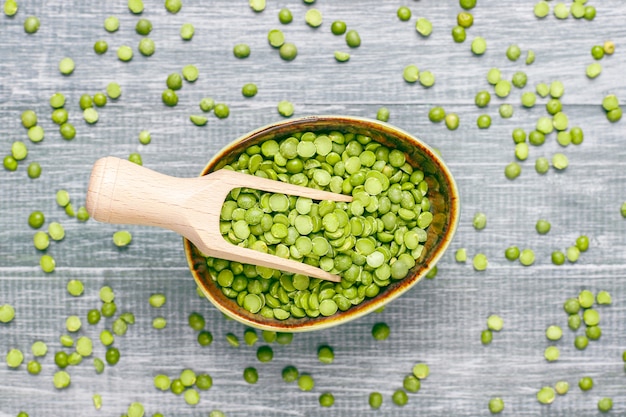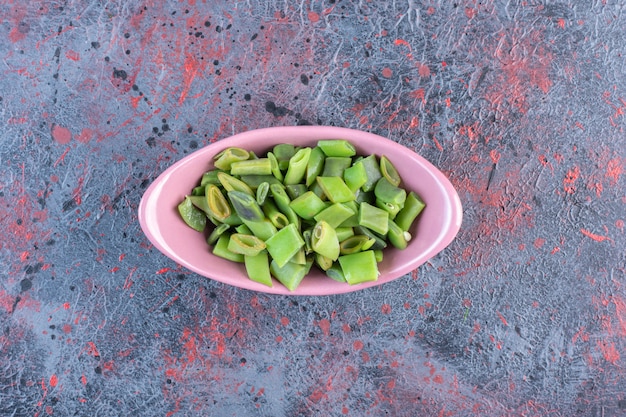Let's face it, snow peas are a bit of a culinary chameleon. One minute they're starring in a vibrant stir-fry, the next they're adding a delightful crunch to a salad. And while they're pretty darn versatile, there's a knack to getting them just right. Overcook them, and you're left with mushy, sad-looking peas. But get the timing right, and you'll be rewarded with a delicious symphony of crispness and freshness. So, buckle up, because I'm about to share my insider secrets for cooking snow peas that are simply divine.
(Part 1) Choosing the Right Snow Peas

It all starts with the right ingredients. You wouldn't expect a gourmet meal to be made with subpar ingredients, would you? So, when it comes to snow peas, I'm all about quality. You want them fresh, firm, and vibrant, ready to give your dish a burst of green goodness.
Where to Find the Best Snow Peas
Let's be honest, supermarket snow peas can be a bit of a gamble. You're often left wondering if they've been sitting around for ages. So, whenever possible, I head to my local farmers market. That's where you'll find snow peas bursting with flavor, picked just a few days ago. If you're stuck with the supermarket, be sure to check the "use by" date and choose the freshest ones you can find.
Storing Your Snow Peas
Okay, so you've got your perfect snow peas. Now, you need to keep them happy until you're ready to cook them. I like to wrap them loosely in a paper towel and store them in the fridge. This keeps them from getting soggy and helps them retain their crispness.
(Part 2) Prepping Your Snow Peas for Cooking

Okay, you've got your snow peas, but they're not quite ready for the kitchen just yet. There are a few essential steps to ensure they cook beautifully and retain their vibrant color.
Cleaning Your Snow Peas
You might think snow peas are naturally clean, but there's no harm in giving them a quick rinse. I usually toss them in a colander and run cold water over them, getting into those little nooks and crannies. It's a quick way to make sure they're ready for cooking.
Trimming Your Snow Peas
Sometimes snow peas come pre-trimmed, but other times, you've got to do it yourself. No worries, it's a simple task. Just snip off the stem end and the little tendril at the other end. Now, you might be tempted to remove the strings, but trust me, they're actually quite tender and edible.
(Part 3) Cooking Methods for Snow Peas

Now for the fun part – cooking! There are a few different ways to get your snow peas ready, and each method brings a unique texture and flavor to the table. But remember, the goal is to keep them crisp and vibrant, so you want to avoid overcooking them.
Boiling Snow Peas
Boiling is a simple and quick method that's perfect for a busy weeknight. Just bring a pot of salted water to a rolling boil, drop in the snow peas, and cook for just 1-2 minutes. You want them to turn a brighter shade of green and be slightly tender, but still retain a nice bite. Once they're cooked, immediately drain them and give them an ice bath. This stops the cooking process and helps them stay crisp.
Stir-Frying Snow Peas
Stir-frying is another popular choice, especially if you want to create a flavorful, one-pan dish. Heat a wok or frying pan over high heat with a tablespoon of oil, and let it shimmer before adding your snow peas. Stir-fry for 2-3 minutes, and watch those peas turn a vibrant green. Want to add a bit of extra flavor? A splash of soy sauce, oyster sauce, or your favorite stir-fry sauce will do the trick.
Steaming Snow Peas
Steaming is a gentle method that helps preserve the nutrients in snow peas. Fill a steamer basket with water, bring it to a boil, and then add your snow peas. Steam for 2-3 minutes, and they'll be tender and ready to go.
Sautéing Snow Peas
Sautéing is similar to stir-frying, but you use a lower heat. Heat a pan over medium heat with a tablespoon of oil, add your snow peas, and cook for 3-4 minutes, stirring occasionally. You're aiming for a tender texture with a lovely golden hue.
(Part 4) Mastering the Timing: Avoiding Mushy Snow Peas
Remember what I said about overcooking? Snow peas are notorious for turning mushy if you don't keep a watchful eye. So, it's all about that perfect timing!
Here's a little cheat sheet to help you avoid the mushy abyss:
- Don't overcrowd the pan: If you're stir-frying or sautéing, make sure your snow peas have enough space to cook evenly. Crowding the pan will create steam and lead to mushy peas.
- Use high heat: High heat is your friend. It creates a quick sear and helps those peas maintain their crispness. If you use low heat, they'll steam and lose their lovely texture.
- Cook them quickly: Snow peas don't need a lot of time in the heat. A few minutes are all they need to reach their peak of deliciousness.
(Part 5) The Magic of Flavour: Enhancing Your Snow Peas
Snow peas are great on their own, but a little bit of flavour can take them to the next level. Think of it as adding a dash of personality to your dish.
Garlic and Ginger
This classic combination is a match made in flavor heaven. Garlic and ginger bring a pungent, aromatic depth to snow peas. You can sauté them with the peas or add them to a stir-fry for an extra punch of flavor.
Soy Sauce and Sesame Oil
A dash of soy sauce and sesame oil adds a savory, nutty complexity to snow peas. I love adding this combo to a stir-fry or using it as a dipping sauce.
Chili Flakes
For those who like a bit of heat, chili flakes are the way to go. A pinch will add a subtle kick, while a more generous sprinkle will bring the fire.
Lemon Juice
Lemon juice adds a bright, tangy counterpoint to the sweetness of snow peas. Squeeze a little over them after cooking, or use it as a part of a salad dressing for a refreshing touch.
(Part 6) Serving Your Snow Peas: Delicious Ideas
Now you've cooked your snow peas to perfection, it's time to showcase them! There are so many delicious ways to serve them, whether you're looking for a simple side dish or a more elaborate culinary creation.
As a Side Dish
Snow peas make a brilliant side dish for any meal. Pair them with grilled meats, fish, or poultry, or serve them up with a simple dipping sauce.
In Salads
Add a bit of crunch and freshness to your salads with snow peas. They work beautifully in both green salads and grain salads, whether raw or lightly steamed.
In Stir-Fries
Snow peas are a must-have for any stir-fry, adding a delightful crunch and a burst of freshness. Toss them with other vegetables, tofu, or meat for a well-balanced dish.
In Soup
Snow peas can add a touch of sweetness and texture to soups. Add them to a simple chicken noodle soup or a more complex vegetable broth for a delightful surprise.
In Pasta
For a quick and easy pasta dish, add some snow peas to your favourite pasta sauce. They work particularly well with pesto and tomato-based sauces.
(Part 7) Snow pea recipes: Inspiration for Your Kitchen
Now it's time to get creative in the kitchen! Here are a few recipes to inspire your culinary journey with snow peas.
Simple Snow Peas with Garlic and Ginger
This is a quick and easy recipe that lets the flavour of the snow peas shine through.
- Wash and trim 1 pound of snow peas.
- Heat 1 tablespoon of oil in a wok or frying pan over high heat.
- Add 2 cloves of minced garlic and 1 tablespoon of grated ginger. Stir-fry for 30 seconds.
- Add the snow peas to the pan and stir-fry for 2-3 minutes, until they are crisp and bright green.
- Season with salt and pepper to taste.
- Serve immediately.
Snow Pea and Shrimp Stir-Fry
This is a flavour-packed stir-fry that's perfect for a quick and healthy meal.
- Wash and trim 1 pound of snow peas.
- Heat 1 tablespoon of oil in a wok or frying pan over high heat.
- Add 1 pound of peeled and deveined shrimp. Stir-fry for 2-3 minutes, until they are pink and cooked through.
- Add the snow peas to the pan and stir-fry for 2-3 minutes, until they are crisp and bright green.
- Add 1/4 cup of soy sauce, 1 tablespoon of sesame oil, and a pinch of red pepper flakes. Stir-fry for 1 minute.
- Serve immediately over rice.
Snow Pea and Tofu Salad
This is a light and refreshing salad that's perfect for a summer lunch or dinner.
- Wash and trim 1 pound of snow peas.
- Steam the snow peas for 2-3 minutes, until they are tender but still crisp.
- In a large bowl, combine the snow peas with 1 block of firm tofu, crumbled, 1/2 cup of chopped red onion, 1/4 cup of chopped cilantro, and 1/4 cup of chopped peanuts.
- Whisk together 1/4 cup of soy sauce, 2 tablespoons of rice vinegar, 1 tablespoon of sesame oil, and 1 tablespoon of honey. Pour the dressing over the salad and toss to combine.
- Serve immediately.
(Part 8) Snow Pea Nutrition: A Healthy and Delicious Choice
Okay, let's talk about why snow peas are a good choice for your plate. Not only are they delicious, but they're packed with essential nutrients that support your well-being.
Here's a breakdown of the nutritional goodness you'll find in a serving of snow peas:
| Nutrient | Per Serving (1 cup) | Percentage of Daily Value |
|---|---|---|
| Calories | 40 | - |
| Protein | 3 grams | 6% |
| Carbohydrates | 7 grams | 2% |
| Fiber | 3 grams | 12% |
| Vitamin C | 20 milligrams | 22% |
| Vitamin A | 330 IU | 7% |
| Vitamin K | 33 micrograms | 37% |
| Iron | 1 milligram | 6% |
As you can see, snow peas are a good source of fiber, vitamin C, vitamin K, and iron. They're also low in calories and fat, making them a healthy and satisfying snack or meal.
(Part 9) FAQs about Snow Peas
Now, let's address some common questions that might be swirling in your mind.
1. Can I eat the strings of snow peas?
Yes, you can eat the strings of snow peas! They are actually quite tender and edible. There's no need to go through the hassle of removing them.
2. How do I know if snow peas are bad?
The look of snow peas is a good indicator of their freshness. If they are wilted, yellow, or have any blemishes, they're probably not at their best. Look for firm, bright green peas that are bursting with life.
3. What is the difference between snow peas and sugar snap peas?
Snow peas and sugar snap peas are both members of the pea family, but there are a few key differences. Snow peas have a flat pod with small, undeveloped peas inside, while sugar snap peas have a slightly larger pod with larger, sweeter peas. Sugar snap peas can be eaten whole, including the pods, while snow peas are typically eaten without the pods.
4. What can I do with leftover snow peas?
Leftover snow peas can be stored in the fridge for up to 3 days. They can be added to salads, stir-fries, or used as a topping for soups or sandwiches.
5. Where can I buy snow peas?
Snow peas can be found at most grocery stores, especially in the produce section. They can also be found at farmers' markets and specialty food stores.
Everyone is watching

Corn on the Cob: The Ultimate Guide to Perfectly Cooked Ears
Healthy MealsAh, corn on the cob. Just the name evokes images of sunny days, barbecues, and that sweet, juicy flavour that ...

Perfect Pork Roast Oven Cooking Time: A Guide to Delicious Results
Healthy MealsThere's something truly satisfying about a perfectly roasted pork. The aroma alone is enough to make your mout...

Ham Cooking Time: How Long to Bake, Smoke, or Boil a Delicious Ham
Healthy MealsAh, ham. It's a classic, isn't it? A real crowd-pleaser, especially around holidays. And when done right, it'...

Scallops: The Ultimate Guide to Perfect Cooking
Healthy MealsAh, scallops. Those delicate, sweet, and utterly delicious morsels of the sea. They hold a special place in my...

Spaghetti Squash: The Ultimate Guide to Cooking and Serving
Healthy MealsRemember that time you saw spaghetti squash at the supermarket, looking all bumpy and strange, and thought, "W...
